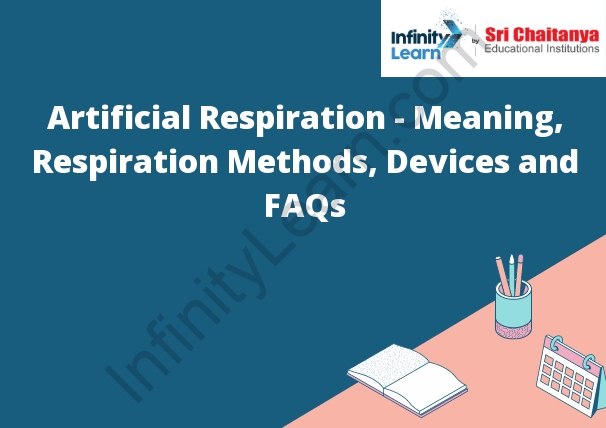Table of Contents
Artificial Respiration Meaning
The lungs are a pair of organs in the chest that are used for breathing. The lungs take in oxygen from the air and give off carbon dioxide. Artificial respiration is the process of mechanically forcing air into and out of the lungs. It is used to keep a person alive when they cannot breathe on their own. There are a few different methods of doing artificial respiration, but all of them involve forcing air into the lungs and then expelling it. This causes the lungs to inflate and deflate, which also helps to circulate oxygen through the body.

Different Methods of Artificial Respiration
There are different methods of artificial respiration in points:
1. Mouth-to-mouth resuscitation: This is the most common form of artificial respiration. It involves exhaling air into the mouth of the person who is not breathing and then inhaling the exhaled air.
2. Mouth-to-nose resuscitation: This is similar to mouth-to-mouth resuscitation, but it involves exhaling air into the person’s nose.
3. Bag-valve-mask resuscitation: This is a more advanced form of artificial respiration that involves using a bag and mask to create a seal around the person’s mouth and nose. However, bag squeezed to force air into the person’s lungs.
4. Intubation: This is a more advanced form of artificial respiration that involves inserting a tube into the person’s airway to help them breathe.
Schaffer’s Method
Schaffer’s Method is a research strategy that helps researchers to identify the relationships between different variables in a study. This method used to identify the causes and effects of different variables in a study. This method also used to identify the correlation between different variables in a study.
Sylvester’s Method
- The Sylvester’s Method is a numerical method use to solve systems of linear equations. The method is a variant of the Gaussian elimination algorithm. The algorithm named after James Sylvester who first proposed the method in 1878.
- The algorithm begins by solving the system of equations for the unknowns in the left-most column. The values in this column substituted into the equations in the remaining columns, and the algebraic equations solved for the unknowns in these columns. This process repeated until all of the unknowns have been solved for.
Mouth to Mouth Respiration
Mouth to mouth respiration is the process of exchanging oxygen and carbon dioxide between two people by mouth to mouth contact. It is used when a person is not breathing or when their breathing is not effective, such as when they are in cardiac arrest.
Artificial Respiration Machine
- The artificial respiration machine, also known as a respirator, device used to provide respiratory support to a patient who is unable to breathe on their own.
- The machine works by supplying the patient with a stream of oxygen-rich air, which helps to keep the patient’s lungs functioning properly.
Artificial Breathing Devices
There are a few different types of artificial breathing devices that used to help people breathe when they are unable to do so on their own. The most common type of artificial breathing device is a ventilator, which helps to pump air in and out of the lungs. Other types of artificial breathing devices include oxygen tanks and masks, which deliver oxygen to the lungs, and CPAP machines, which help to keep the airways open during sleep.









